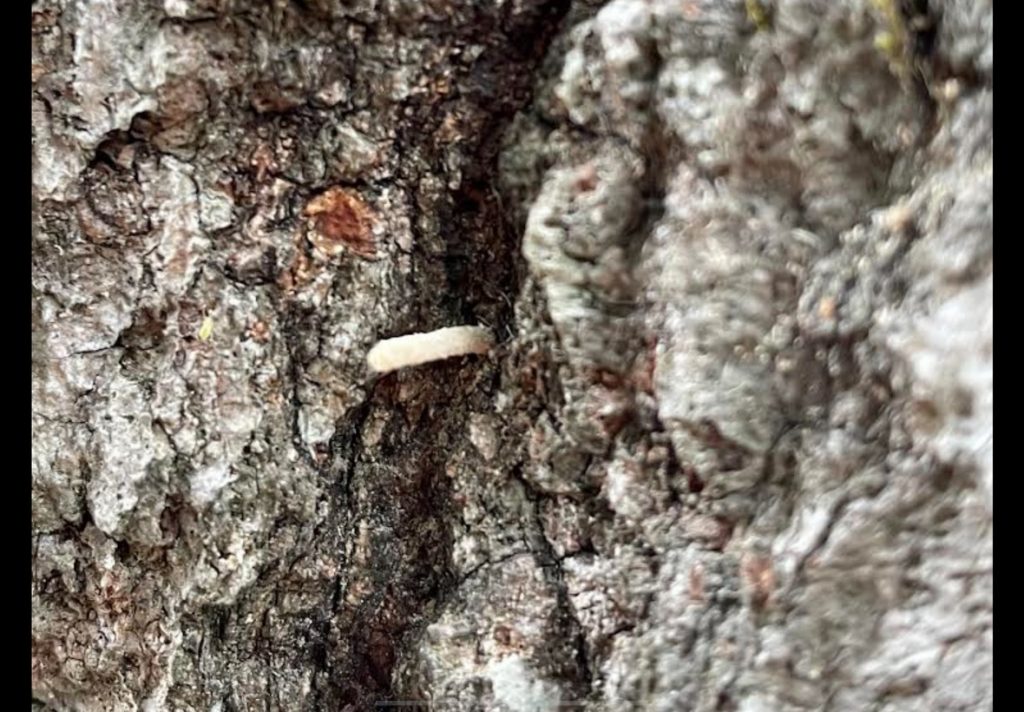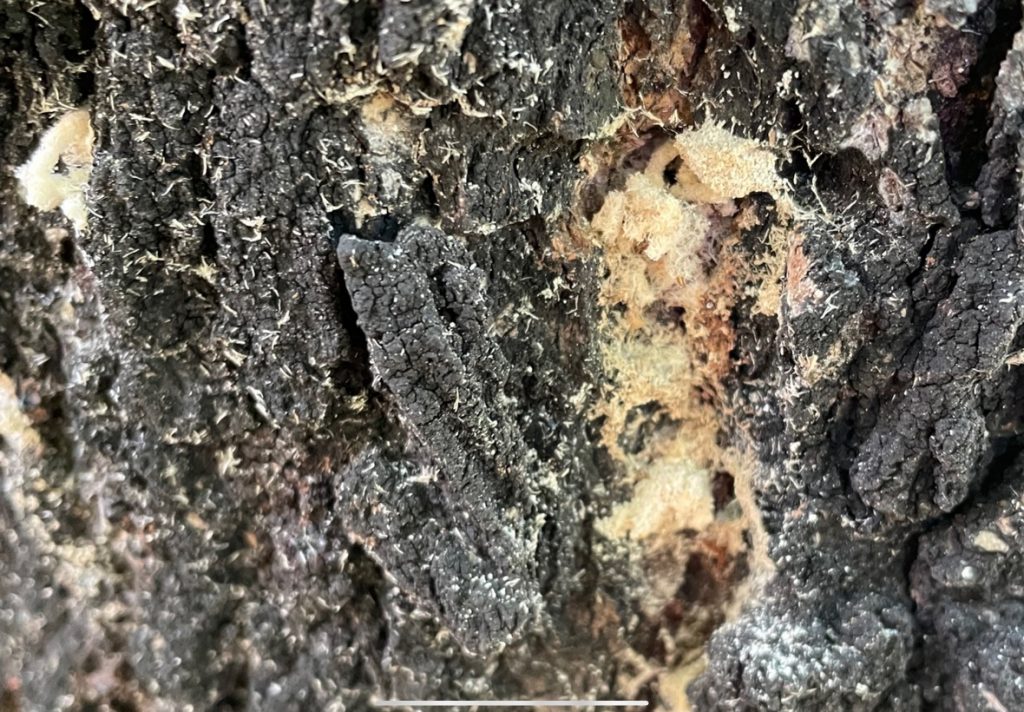
Have you ever noticed any strange sawdust around your trees, on the bark, or around the base of your tree? Sometimes you’ll see it accumulate in the crevices of the bark or in spiderwebs on the trees. Oh heavens, it’s raining from the sky, not falling from the clouds but coming from the tree canopy above in the form of frass. This is likely from an insect and it’s a clue there’s an infestation of insects drilling holes into your tree. This subject is definitely ‘boring’ in nature, but it’s important to know what’s eating your trees and if you need to take action. By the time it is noticed, it is sometimes too late as the tree is dying or dead, but it’s not too late for the other trees in your yard that could be susceptible to that same fate.

The first step is identifying what’s in your tree by inspecting the dust on your tree, whether it’s frass or some other similar insect fecal matter. Termites don’t leave frass per se, but they leave something closer to a tiny pellet. Frass from an insect-eating your tree will appear like sawdust, sometimes light or dark in color, usually what’s left behind by a boring insect or an ant. Carpenter ant frass looks like pencil shavings with bits of ant body parts strewn about, or ‘remn-ants’ of the less fortunate. Frass from a boring insect adult or larvae may leave an array of types, commonly in cylinders that look like little worm shapes hanging from the bark of the tree. The Ambrosia beetle will leave behind these tiny celebrations of not-so-funfetti.

Boring insects such as the bark beetle can form pitch tubes from the gummy excrement that protrude out from the tree, a half inch in diameter that appears as a yellowish resinous hardened ooze. Gross right?! You’ll find these at the lowest 15 feet of the tree trunk, an obvious sign that the tree is in serious duress. The beetle follows ethanol signals given off by trees that are experiencing stress from a vulnerability due to some health issue. The weakened system of the tree affects the trees down to a cellular level that allows the insects easier access to the tree. At an elevated point of infestation, you’ll need professional help and should consult an arborist with a spray license for a specialized insecticide/pesticide treatment.

Avoiding the attacks from a slough of insect onslaught depends on a variety of different methods. Planting a variety of species creates a diverse environment of nonhost trees that may deter certain pests. Proper irrigation techniques such as less-frequent deep soaks to the outer root system is better than practices common for the typical care provided for lawns. Natural predators can help reduce pest populations, so you can try encouraging habitat for woodpeckers and other predaceous beetles. Trees that are infested should be removed, and no pieces or parts should be left behind to infect other trees. Keep an open eye, there might be a frass-hole somewhere in your yard.



